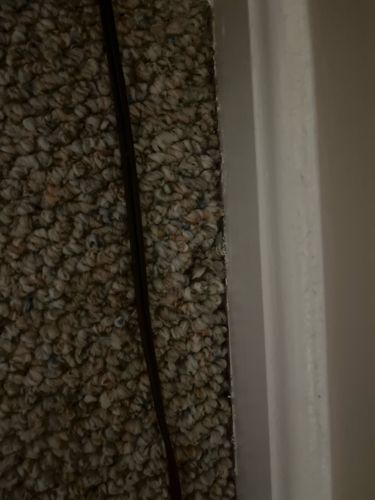Carpet Beetle (likely Varied Carpet Beetle or Black Carpet Beetle)
Scientific Name: Likely 'Anthrenus verbasci' (Varied Carpet Beetle) or 'Attagenus unicolor' (Black Carpet Beetle)
Order & Family: Order: Coleoptera, Family: Dermestidae
Size: Larvae: 1-5 mm; Adults: 2-4 mm

Natural Habitat
Indoors: Carpets, rugs, upholstered furniture, closets, attics, museums, and anywhere natural fibers or dried animal products are stored. Outdoors: Flower gardens where adults feed on pollen.
Diet & Feeding
Larvae feed on natural fibers, including wool, silk, fur, feathers, and dried animal products (e.g., dead insects, pet food, leather, taxidermy). Adults feed on pollen and nectar from flowers.
Behavior Patterns
Carpet beetle larvae are often found in dark, undisturbed areas, feeding on keratin-containing materials. Adults are typically found outdoors, feeding on pollen and nectar, but can enter homes to lay eggs. Larvae molt multiple times and can take several months to a year to develop, depending on environmental conditions and food availability. They are known for their slow movement.
Risks & Benefits
Risks: Considered a common household pest. Larvae can cause significant damage to textiles, clothing, carpets, and museum specimens made of natural fibers. They do not bite humans or transmit diseases. Benefits: In nature, they play a role in decomposition by breaking down animal remains and dry organic matter.
Identified on: 8/12/2025